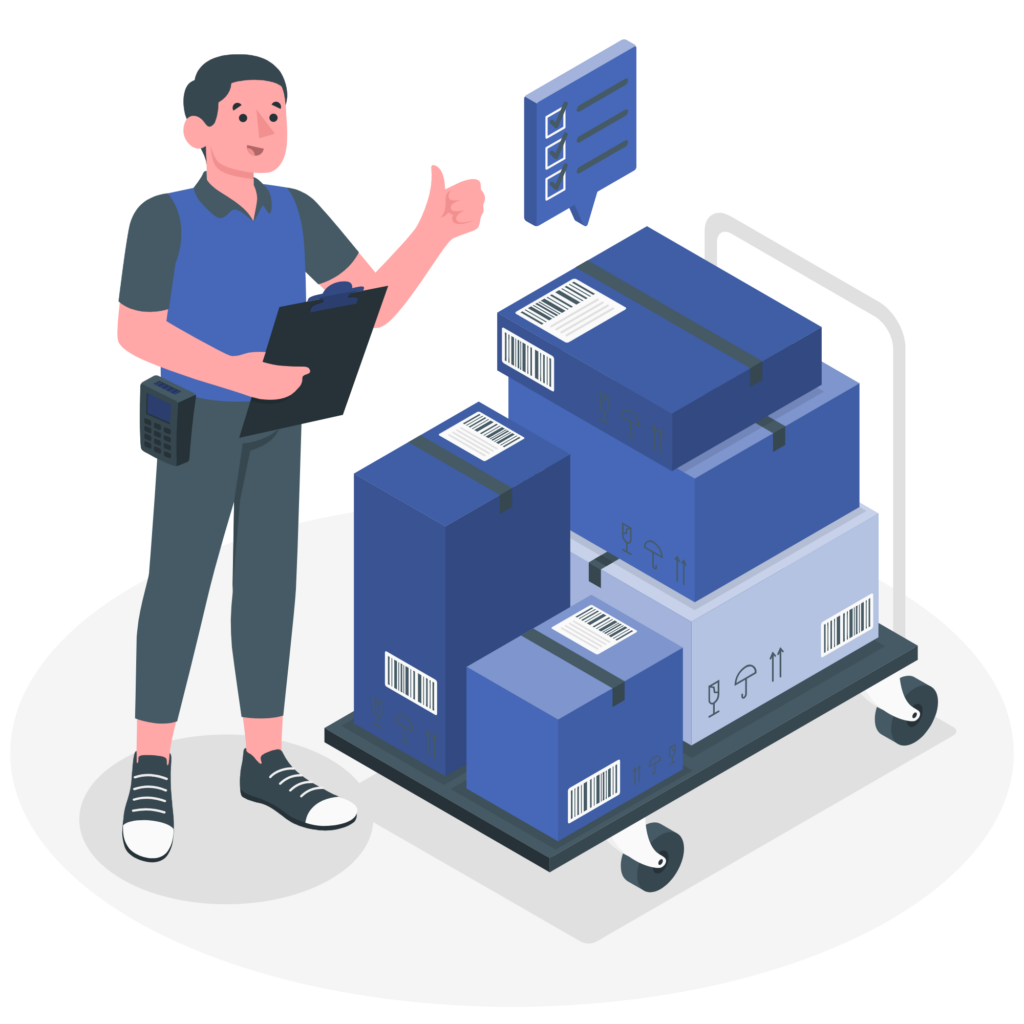With automation making huge strides in recent years in the distribution process, many product distributors that use traditional models are finding it hard to keep up. New distribution technologies and wholesale distribution software are advancing at such a rapid pace that new and potential adopters are increasingly frustrated when trying to choose the right solution for their distribution strategies.
As this trend is unlikely to change, many distributors are scratching their heads on what to do next. Should they focus on automation in fulfillment, delivery, payment systems, or in related support and services?
It can be overwhelming for any distributor who has grown accustomed to a user experience model that is very customer-service-focused. The early touchpoints that have traditionally occurred with sales reps and distributors in cordial meetups at tradeshows, industry events, or even telemeetings are now being replaced by streamlined processes that rely on new distribution technology to meet the needs of the customer.
Key Areas Where Distribution Technology is Evolving
To be strategic in their planning, distributors must create a plan of action that delivers on what they consider to be their most important pain points. So, ask yourself this. Are you more interested in streamlining the fulfillment process, sourcing process, delivery, support services, payment systems, or a combination of each? By exploring the possibilities, you’ll be able to create a plan that is ideal for your own goals.
Per a new report, 2021 State of Technology in Distribution: Automating the Customer Journey1, released by Robert Kelley and Jonathan Bein of the Distribution Strategy Group,
“The most significant improvements have occurred in how customers shop. This is shortening the time it takes for customers to find the right products, driving significant efficiency and productivity gains.” In addition, the report points out that “Many distributors are already deploying new distribution technology, such as touchless ordering, while also expanding their “touchless” capabilities with email order automation.”
Robert Kelley and Jonathan Bein, Distribution Strategy Group
To accomplish new goals in adopting new distribution technology such as the examples listed above, let’s begin by exploring some of the avenues available in the marketplace, including the following:
Enterprise Resource Planning (ERP)

ERP helps provide a solution that streamlines the customer transaction from beginning to end. This type of wholesale distribution software can help manage inventory, logistics, planning, and even financials. The main goal of implementing ERP is to help distributors look for inefficiencies in the way they conduct business. When distributors optimize each phase of the customer’s buying journey, they cultivate long-term agreements that help guide new production goals, support staffing needs at busier times of the year, and foster long-term relationships.
Customer Relationship Management (CRM)

CRM helps distributors who feel that historic customer data is a great way to gauge business. This type of wholesale distribution software is mainly used to find out who is ordering products, how often they order products, where the items are to be delivered, and for the financial components of the business, including billing and transactional aspects. If customer loyalty is part of a distributor’s core goals, then this type of distribution technology helps personalize the experience by centralizing information that can be easily accessed to meet customer needs and expedite processes.
Email Marketing and Marketing Automation

While email marketing and marketing automation have been around for a while, they typically only act as transactional tools for sending pre-scheduled email blasts that come from your company to your database of customers. So what has changed? Today’s email marketing solutions not only help you with the send process, they also compile valuable data on the habits of everyone who is receiving your email sends.
You now have the power to create niche markets and segment your customers in a very different way that will enhance email open rates and cater to the learned behavior of your email database. These systems cost more than simple email systems, but the payoff can be lucrative if you have the personnel to monitor and act on the rich data captured by this technology.
eCommerce

If there’s one thing all distributors can agree on, it’s that the pandemic created an explosion in eCommerce. While most people think of the increase from a traditional consumer/brick and mortar level (everyday consumers who traditionally went into local stores to purchase goods but then turned to eCommerce), it was also very prevalent in distribution.
In fact, according to Distribution Strategy Group “eCommerce adoption (the ability for a business to take an order online) soared to over 26% during the pandemic. The fastest growth in adoption was in distributors with less than $50 million in sales, which nearly doubled from 13.4% in 2019 to 25.1% in 2020. In addition, they found that “About 47% of distributors larger than $1 billion in revenue have adopted eCommerce, with some sectors such as JanSan (Janitorial Supplies and Solutions) increasing above 50%.”
As a result, DSGs report finds that “Distributors will succeed or fail depending on the quality and capabilities of their digital presence and the ability of customers to shop for and purchase products and services on their websites.”
Warehouse Management Systems (WMS)/Warehouse Execution Systems (WES)

Let’s face it, without your warehouse team and an efficient fulfillment strategy a boom in sales means nothing. With this stage of the customer journey so critical, and with multiple employees fulfilling and sending orders for many clients, it’s necessary to gain strict controls that will help guarantee that you don’t have unhappy customers or shipments sent to the wrong address.
New technologies in distribution and warehouse management take this one step further, deploying Internet of Things (IoT) sensors and technologies that let distributors immediately know if they’re running low on certain items that may need to be shipped in important upcoming orders. The days of manually counting inventory are over with this type of distribution technology that relies on artificial intelligence to make the fulfillment process more accurate and streamlined. In addition to inventory capabilities, some distributors are even deploying robotics and autonomous vehicles to streamline warehouse fulfillment goals.
How Does Factrees Factor into the Distribution Process?
While new distribution technologies are ideal for automating processes, managing business objectives, and keeping customers happy, there’s a key step all distributors must take before these tools can be effectively deployed…finding reputable companies and products that enhance their lines.
Factrees helps distributors make new connections by providing a very cost-effective platform to search for the best vendors. If you can imagine a platform that takes the unknowns out of connecting with the right partners, then Factrees is for you.
Our searchable network allows manufacturers, sales reps, and distributors to quickly find each other using detailed reviews, territory information, company relationships, sales volume, and the insights that matter most when they want to grow your business, create new distribution strategies, or foster business in new territories.
Interested in being an early adopter of factrees? Sign up for our early access list and we will keep you updated on our progress. (no spam, just updates).
Sources:
12021 State of Technology in Distribution Automating the Customer Journey, https://distributionstrategy.com/wp-content/uploads/2021/06/2021-State-of-Technology-in-Distribution-Automating-the-Customer-Journey.pdf
All imagery from https://storyset.com/

